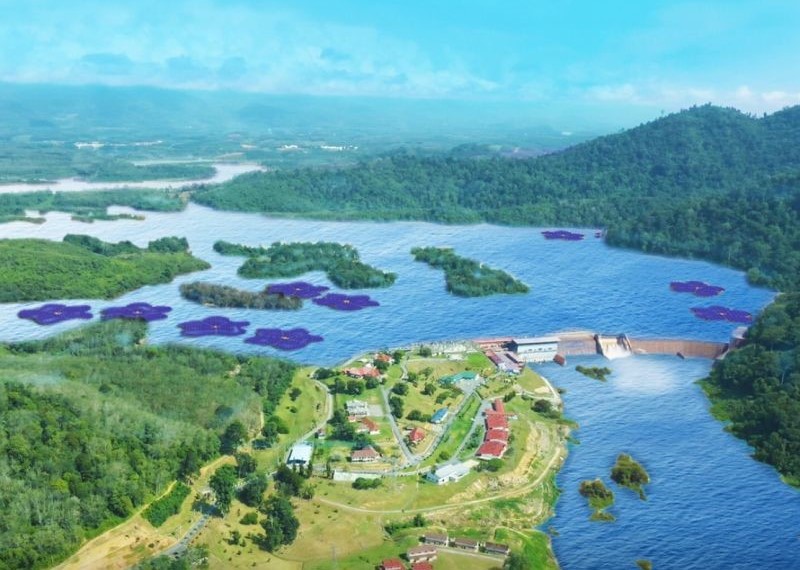Tenaga Nasional Berhad is set to build 2.5 GW of hybrid hydro-floating solar (HHFS) projects at its hydropower dams.
It will initially install 30 MW at its Chenderoh hydro reservoir and follow up with work at its Temenggor and Kenyir hydro reservoirs.
The company said it has signed partnerships with state agencies “to ensure that the HHFS development is carried out successfully and responsibly.” It added that the rollout will support Malaysia’s National Energy Transition Roadmap, which was released last year.
According to Tenaga Nasional Chief Executive Officer Dato’ Seri Ir Baharin Din, using bodies of water for solar installation can conserve land usage, preserve land natural habitats, and reduce water evaporation.
“Unlike traditional thermal power plants, floating solar farms do not have water or air discharges that could negatively impact water or air quality,” he said. “Hence, it minimises pollution and supports biodiversity with minimal disruption to the aquatic ecosystems.”
“Floating solar farms can complement other renewable energy sources to power the national grid with the potential to boost clean power significantly.”
The HHFS project follows a Tenaga Nasional floating solar pilot project, located on an ash pond adjacent to the coal-fired Sultan Azlan Shah power plant on Malaysia’s west coast. According to Baharin, the project has been a “remarkable success.”
Data from Tenaga Nasional shows that the pilot project has generated more than 600 MWh of energy since 2019. It features 288 installed PV modules with a total capacity of 105.12 kWp, equating to enough energy to meet the needs of 30 houses.
“Every component of the floating solar system was carefully chosen and designed. Even the floaters or pontoons were made of certified food-grade high-density polyethene to minimise the impact on water quality,” Baharin said. “The project has shown no adverse impact on wildlife living in the surrounding area.”
In November, Tenaga Nasional opened a tender for a 30 MW floating solar plant in eastern Malaysia.
Malaysia had recorded an estimated 1.9 GW of installed solar capacity by the end of 2022, according to the International Renewable Energy Agency. The country has committed to increasing its renewable energy composition to 70% of its total generation capacity by 2050.
This content is protected by copyright and may not be reused. If you want to cooperate with us and would like to reuse some of our content, please contact: editors@pv-magazine.com.








By submitting this form you agree to pv magazine using your data for the purposes of publishing your comment.
Your personal data will only be disclosed or otherwise transmitted to third parties for the purposes of spam filtering or if this is necessary for technical maintenance of the website. Any other transfer to third parties will not take place unless this is justified on the basis of applicable data protection regulations or if pv magazine is legally obliged to do so.
You may revoke this consent at any time with effect for the future, in which case your personal data will be deleted immediately. Otherwise, your data will be deleted if pv magazine has processed your request or the purpose of data storage is fulfilled.
Further information on data privacy can be found in our Data Protection Policy.